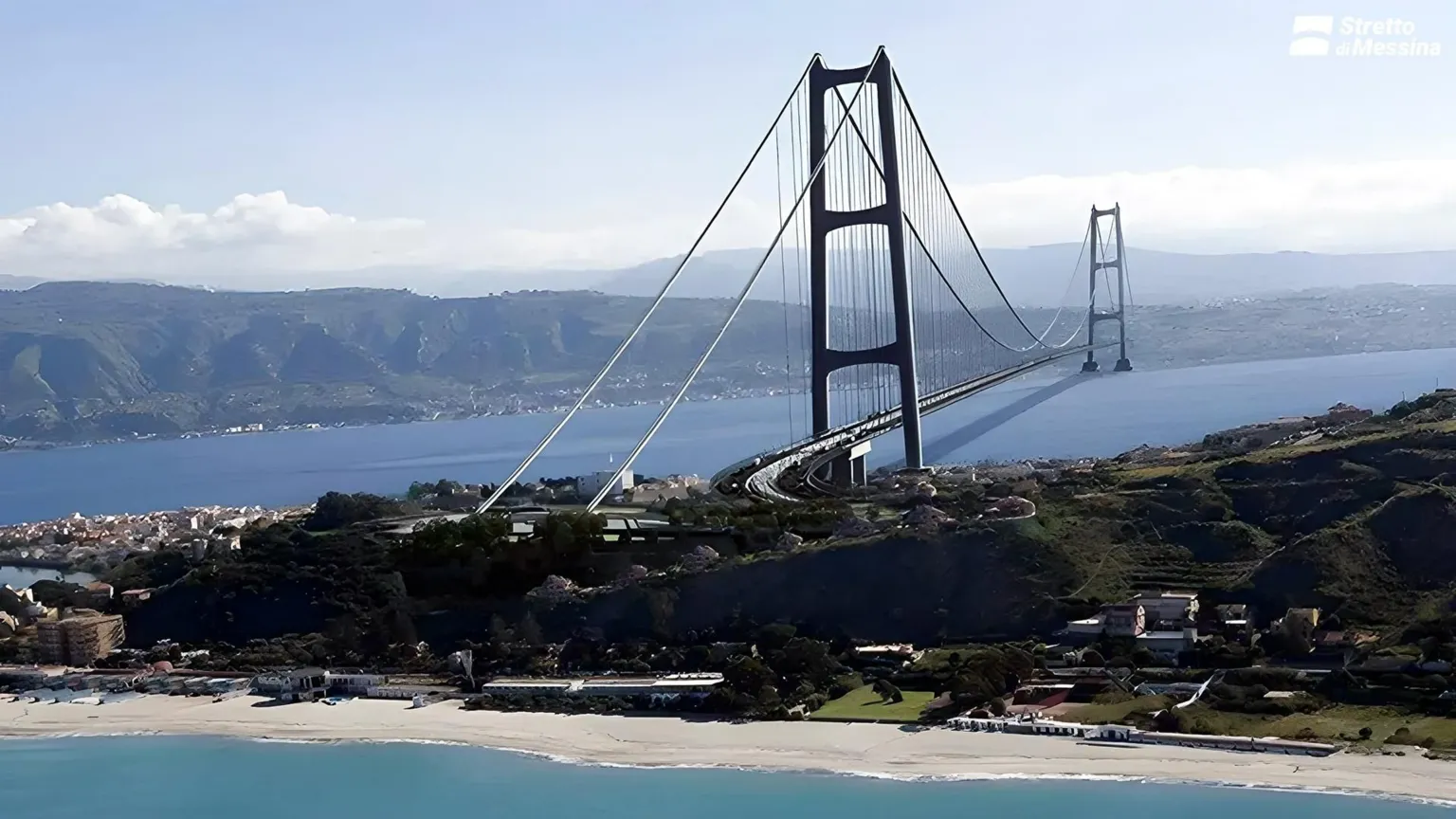The Italian government has given final approval to a €13.5 billion project to build the world’s longest suspension bridge, connecting Sicily to mainland Italy across the Strait of Messina. The plan, one of Europe’s most ambitious infrastructure projects in decades, aims to unite Calabria and Sicily with a 3.3-kilometre crossing in one of the Mediterranean’s most seismically active regions.
Prime Minister Giorgia Meloni described the bridge as “an investment in Italy’s present and future”, acknowledging the immense political and logistical hurdles the project has faced. “We enjoy difficult challenges when they make sense,” she said on Wednesday, following the Cabinet’s approval of the final project.
The Messina Bridge has been under discussion since the 1970s, but repeated attempts to launch construction have been abandoned amid concerns over cost, environmental impact, safety, and the potential for mafia interference. The bridge’s resurrection under Meloni’s government, backed by Transport Minister and Lega party leader Matteo Salvini, marks the most determined effort yet to push the plan into reality.
According to the approved designs, the bridge will be suspended between two 400-metre towers and will carry six lanes of traffic and two railway lines. The government has stated its intention to classify the bridge as a military infrastructure investment, allowing it to count towards Italy’s NATO defence spending targets.
Economic promise meets fierce local opposition
Salvini claims the bridge will bring economic growth and employment to two of Europe’s poorest regions, forecasting the creation of 120,000 jobs per year during the construction phase. Supporters argue that the project will end the logistical bottleneck that currently requires trains to be loaded onto ferries for the 30-minute journey across the Strait.
But local politicians and residents remain sceptical. Senator Nicola Irto of the Democratic Party called the bridge “controversial and divisive”, arguing that funds would be better spent improving local services such as transport, schools and healthcare. Giusy Caminiti, mayor of Villa San Giovanni on the Calabrian coast, said her town stood to be “badly affected” and called for further consultation.
Environmentalists and grassroots groups, including the long-running Calabrian committee “No to the Bridge”, have raised fresh objections. They warn of damage to protected coastal areas and question the bridge’s long-term viability in a region plagued by earthquakes, water scarcity and governance challenges. Some opponents also fear the construction could draw the attention of criminal networks with deep roots in southern Italy’s public contracts sector.
Bureaucratic roadblocks still ahead
Though final ministerial approval has been granted, the project must still pass several more hurdles. The Italian Court of Auditors and various environmental authorities—both national and European—must sign off on the plans. Meanwhile, any local expropriation of land for the project could be subject to legal challenges, potentially delaying or even halting construction.
Whether the Messina Bridge finally becomes a reality or joins the long list of Italian infrastructure projects that never leave the drawing board remains to be seen. For now, it symbolises Rome’s renewed appetite for grand projects—and the political risks that come with them.
Stay updated with Monaco Life: sign up for our free newsletter, catch our podcast on Spotify, and follow us across Facebook, Instagram, LinkedIn, and Tik Tok.
Photo: A rendering of the bridge by the Messina Strait company
